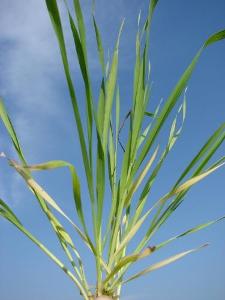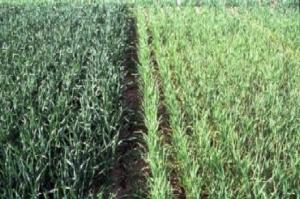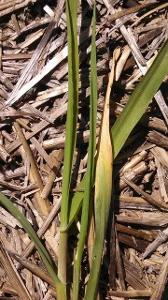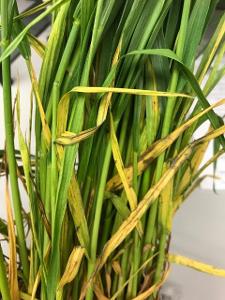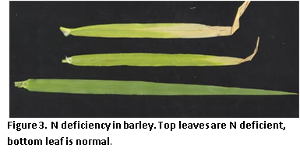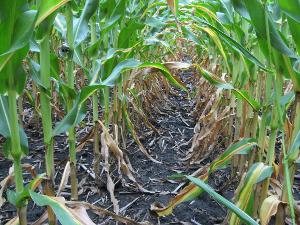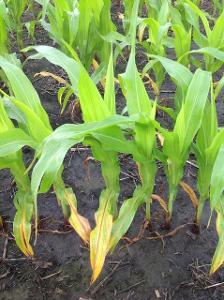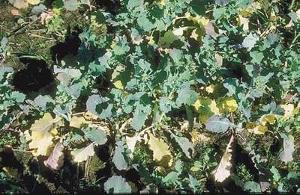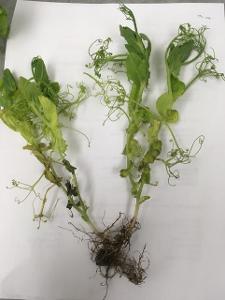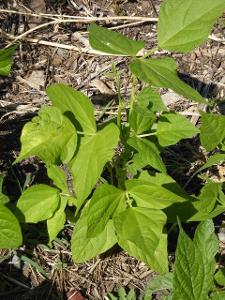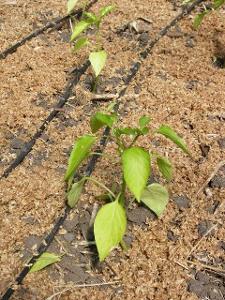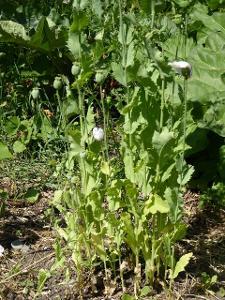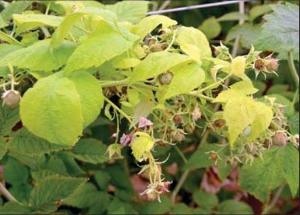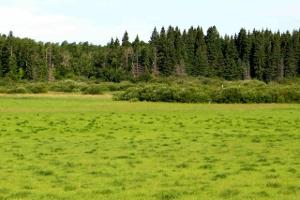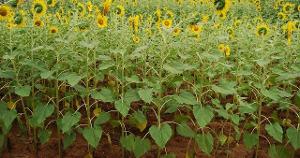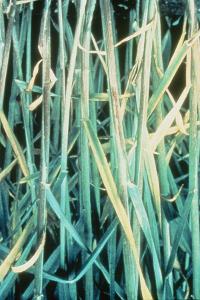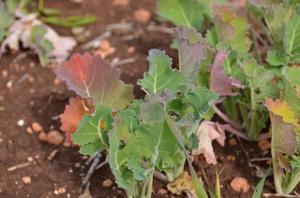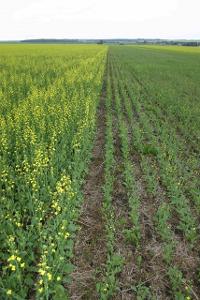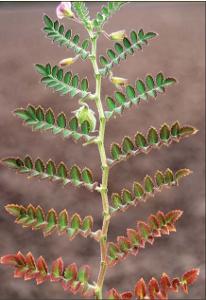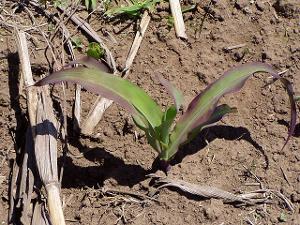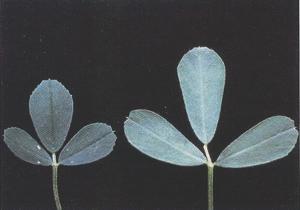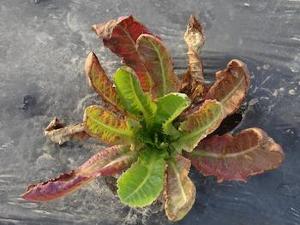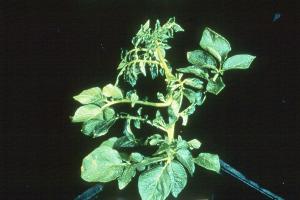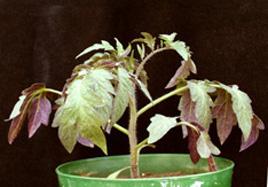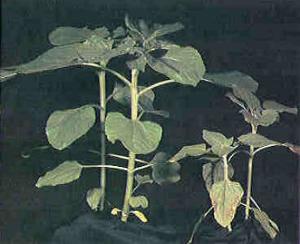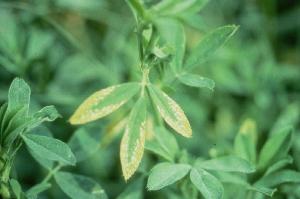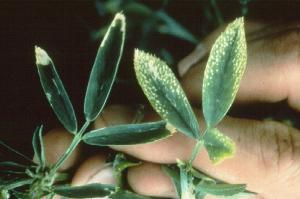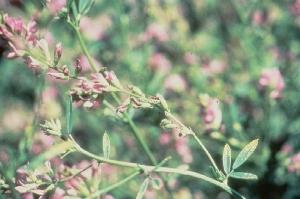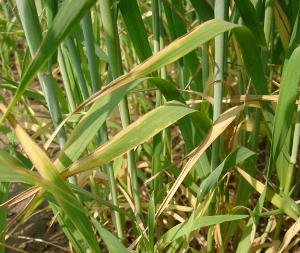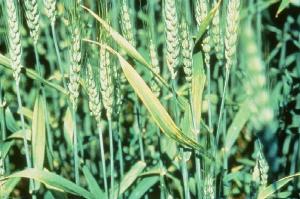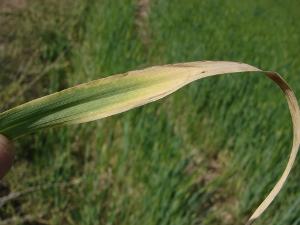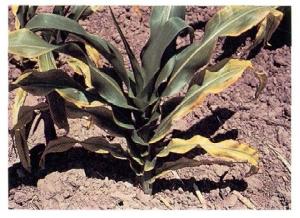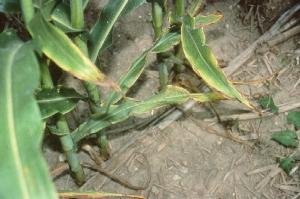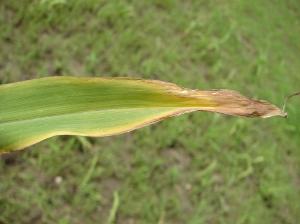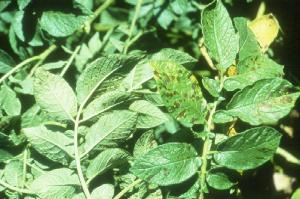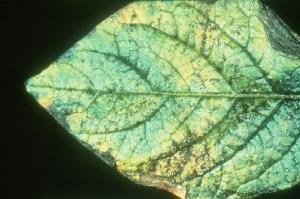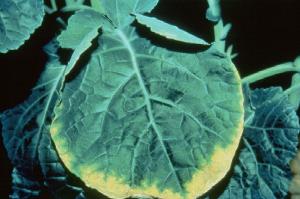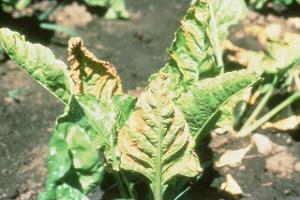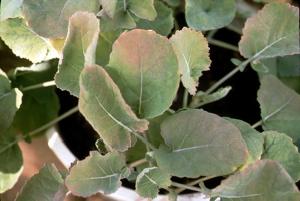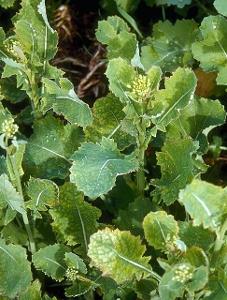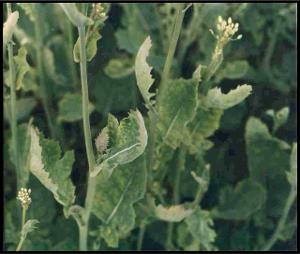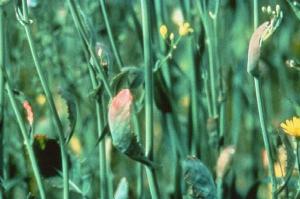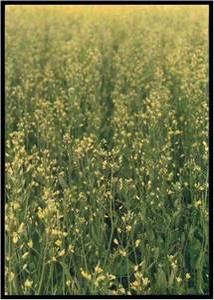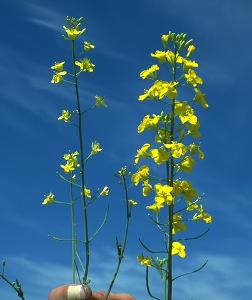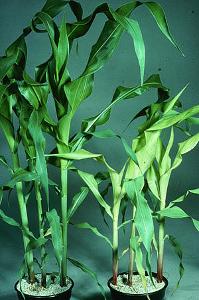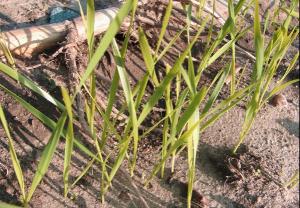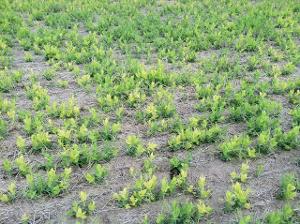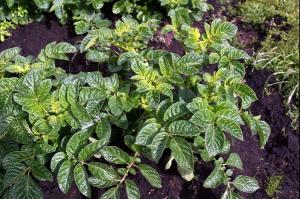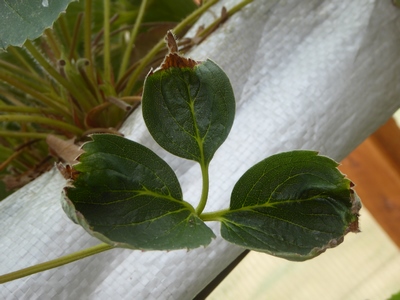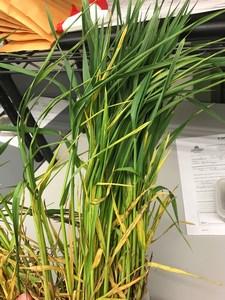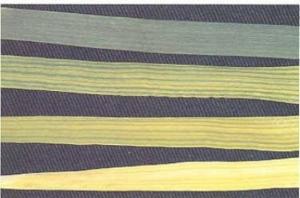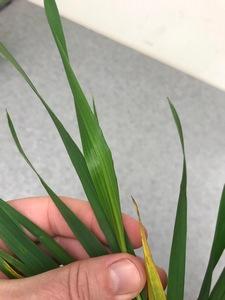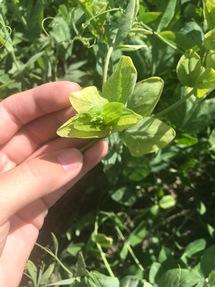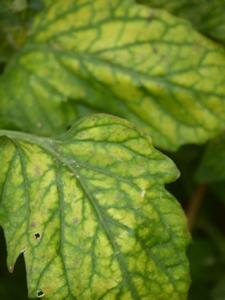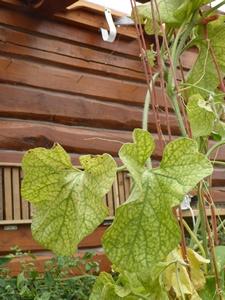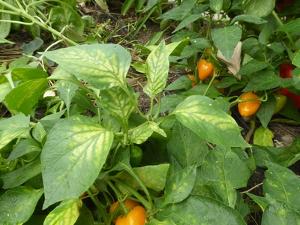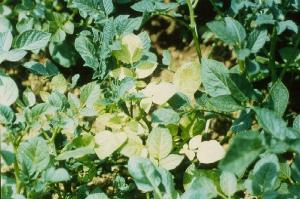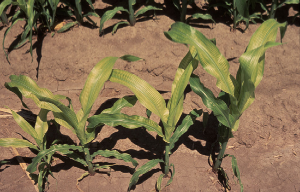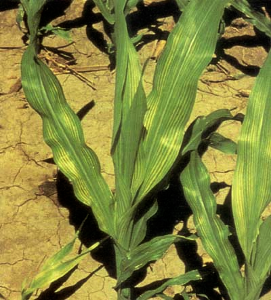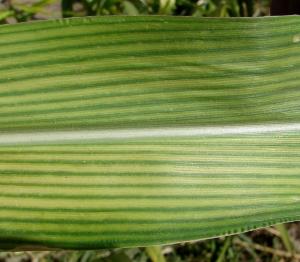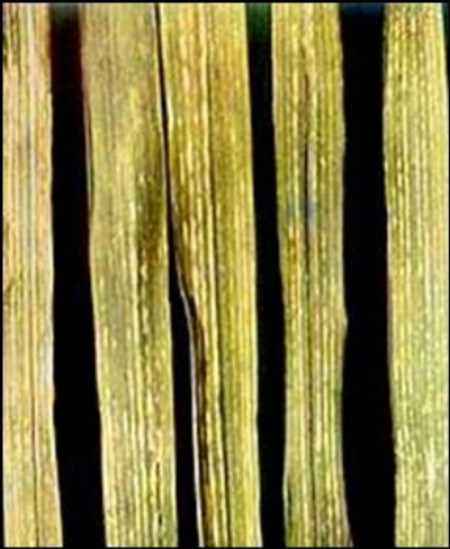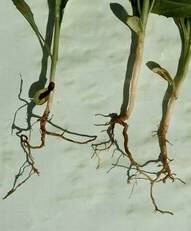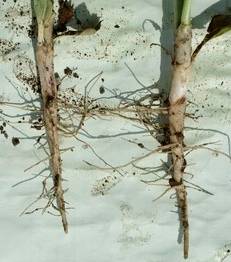Nutrient Deficiency and Toxicity
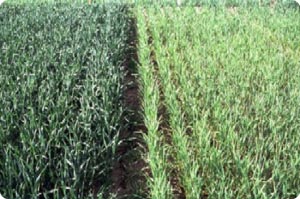
N deficient wheat, Havre, 1996. Image by R. Engel
For optimal crop yield, producers need to recognize the symptoms of insufficient (deficiency) or excess nutrients (toxicity) in the soil. Crops are also affected by immediate factors which may appear to be nutrient deficiencies such as weather conditions or injury, excess fertilizer, pesticide drift or insect infestations. It is critical to perform regular soil testing to determine nutrient levels and monitor changes in soil nutrient status. With historic soils data and information on current growing season conditions, producers, extension agents and crop advisers can more accurately assess what is affecting the crop. This page provides information and photos of the more common nutrient deficiencies and some toxicities that Montanan producers may experience.
If you have any questions about soil nutrients contact Dr. Clain Jones. If you think plant growth issues may be related to pesticide (e.g., herbicide residual in compost), please contact Noelle Orloff (994-6297) or Dr. Tim Seipel (994-4783) for assistance.
General Information
Plant Nutrient Functions and Deficiency and Toxicity Symptoms - MSU Extension Bulletin
Plant Nutrient Deficiency Symptoms - MSU Lives & Landscapes article
Nutri-Facts - Fact sheets written by scientific staff of the International Plant Nutrition Institute (IPNI) that focus on essential plant nutrients and their use. They discuss limiting conditions and deficiency and toxicity symptoms.
Nutrient Deficiency Assessment Tools
Use the following tools, which present the same information differently, to identify nutrient deficiencies in plants.
Visual Assessment Flow Chart
Mobile Nutrients - Cl, K, Mg, Mo, N, P
Immobile Nutrients - B, Cu, Ca, Fe, Mn, S, Zn

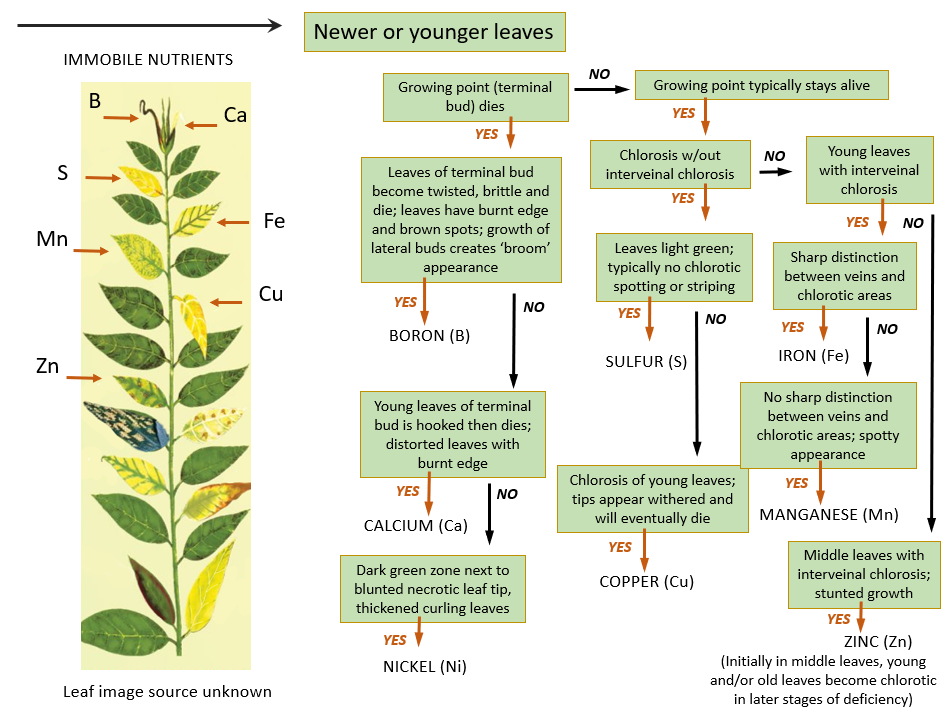
Right click the images and select Open Image in New Tab to enlarge.
Drop-Down Key
To use, select the most correct answer of each two-statement pair until you identify the deficient nutrient.
→ Chloride (Cl)
Photos of, and Notes about Specific Nutrient Deficiencies
Click on images for enlargement, plant ID and photo credit.
Potassium deficiency does not immediately result in visible symptoms. Initially there is reduced growth, with chlorosis and necrosis occurring in older leaves in later growth stages. Older leaves show mottled or chlorotic areas with leaf burn at the margins, usually leaving the midrib alive and green.
Magnesium deficient plants have interveinal chlorosis with green mid-ribs. Leaf margins become yellow or reddish-purple.
| Magnesium deficiency in alfalfa (photo courtesy of PPI) |
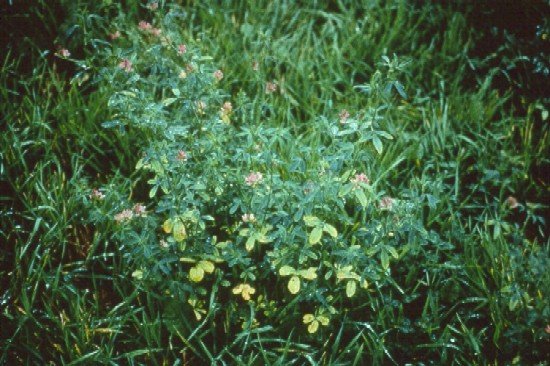 |
| Magnesium deficiency in corn (photo courtesy of PPI) |
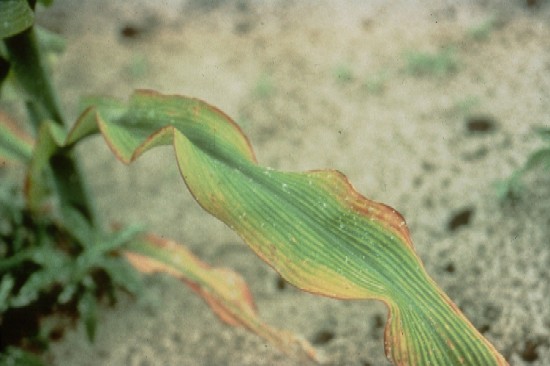 |
| Magnesium deficiency in wheat (photo courtesy of PPI) |
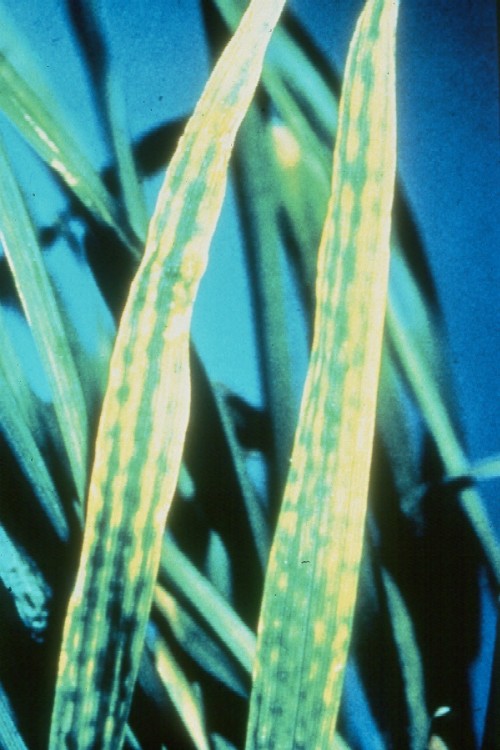 |
|
Magnesium deficiency in tomato with characteristic leaf curl |
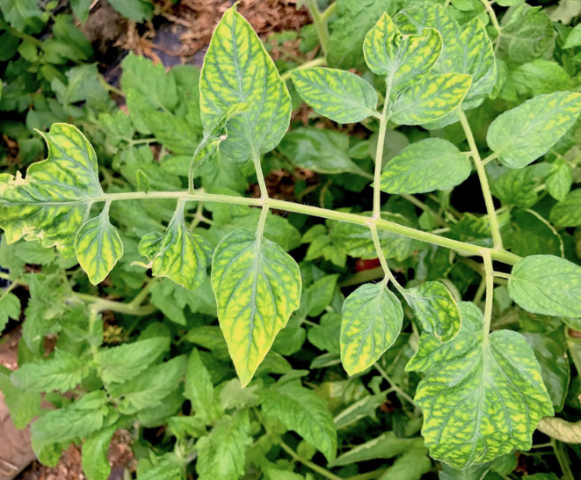 |

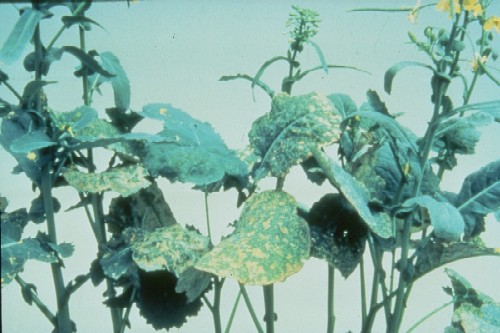
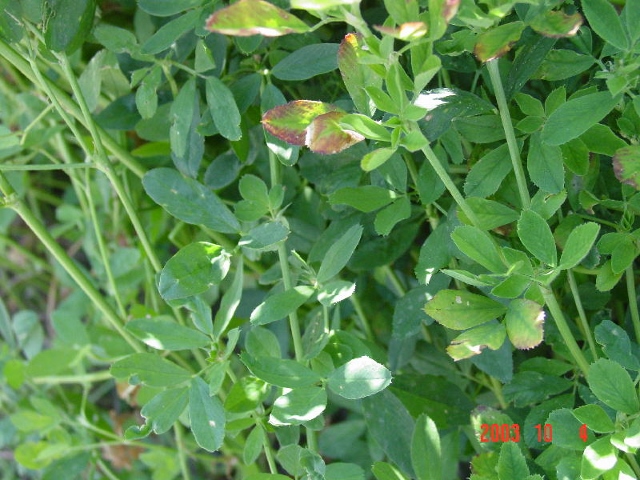
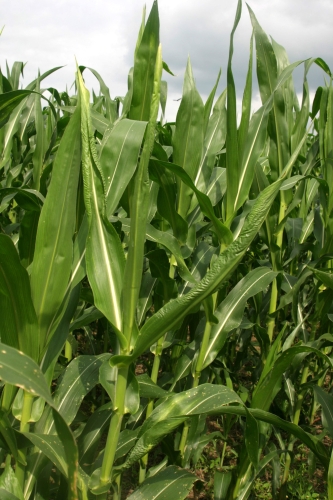
(photos courtesy of R. Engel)


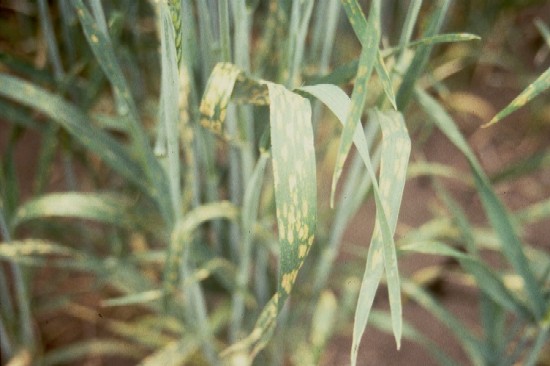
|
Copper deficient plants have chlorotic younger leaves, stunted growth, delayed maturity,
excessive tillering, lodging and sometimes brown discoloration. Copper deficient plants
are prone to increased disease.
Copper deficiency in barley
(photo courtesy of PPI) |
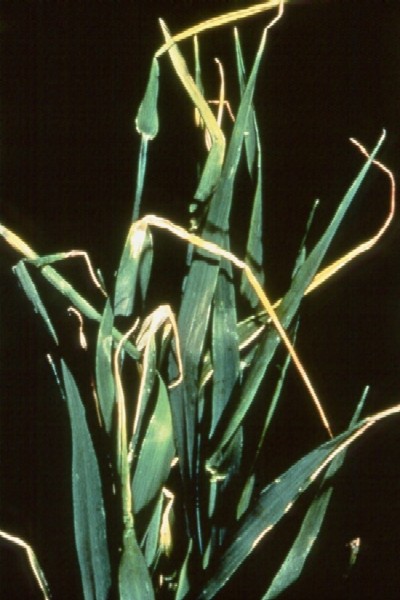 |
|
Copper deficiency in wheat
(photo courtesy of PPI) |
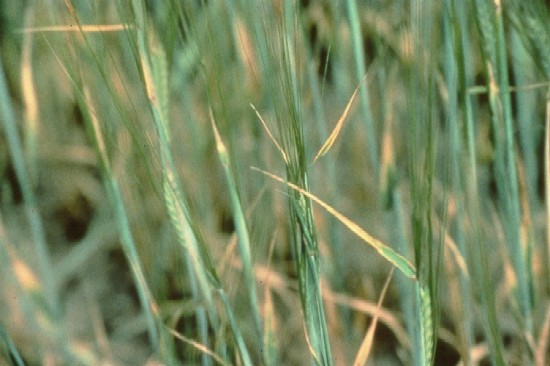 |
|
Copper deficiency in wheat
(photo courtesy of PPI) |
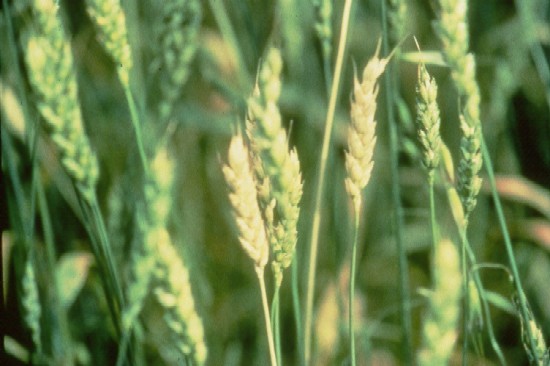 |
|
Copper deficiency in wheat
(photo courtesy of PPI) |
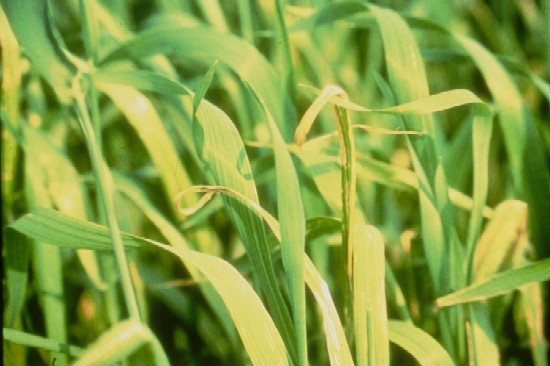 |
|
Copper deficiency in wheat
(photo courtesy of PPI) |
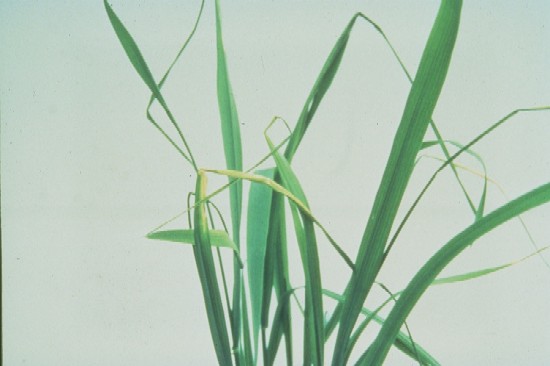 |
|
Copper deficiency in wheat; brown discoloration in the field.
(photo courtesy of R. Engel) |
 |
Mn deficient corn.
These images show manganese (Mn) deficiency. Manganese toxicity can occur in low pH soils. We currently do not have images specifically of Mn toxicity. See the acidic soil/Al toxicity page for photos of fields affected by low soil pH.
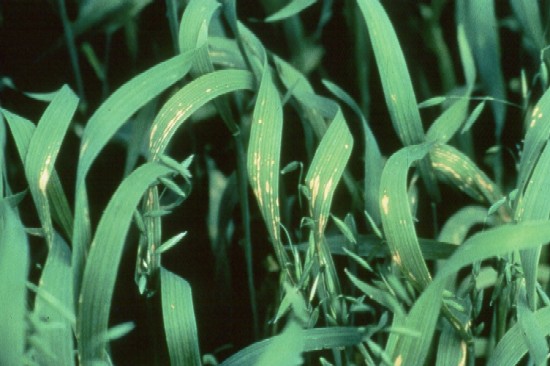
Mn deficient wheat. Photo courtesy of PPI.
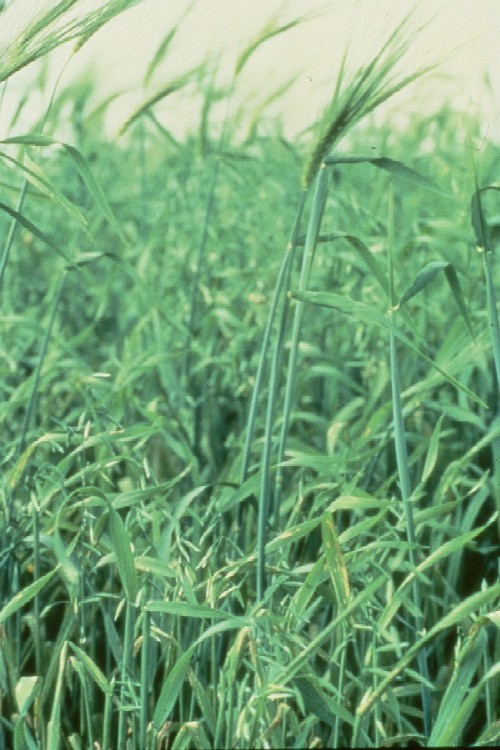
Mn deficient wheat. Photo courtesy of PPI.
|
Similar to sulfur deficiency, but stripes/bands are more white. Zinc deficiency in corn |
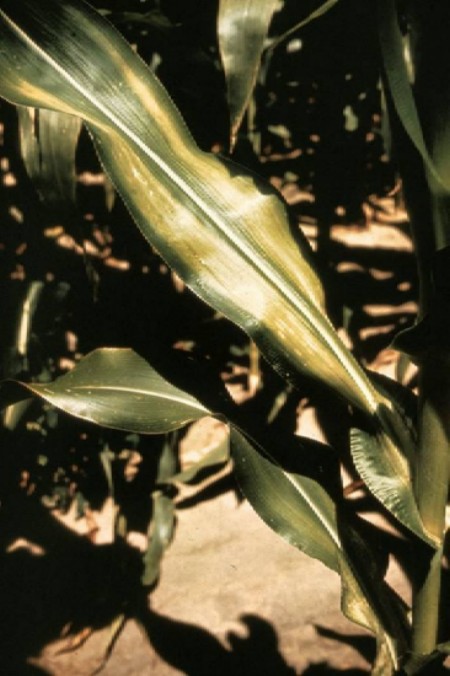 |
|
Zn deficient corn leaf
(photo courtesy of IPNI)
|
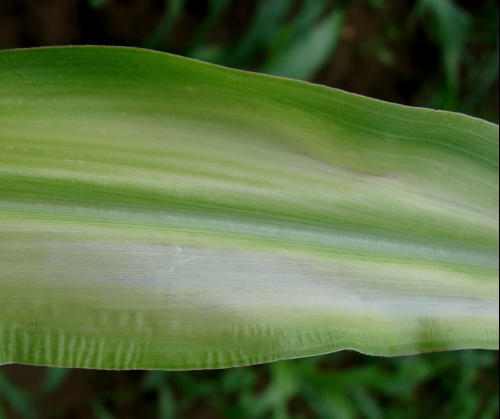 |
|
Zn deficiency in wheat
(photo courtesy of PPI) |
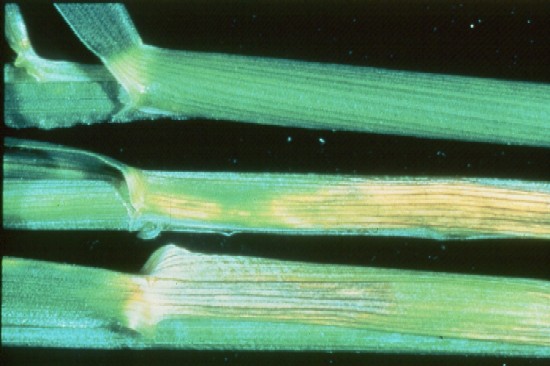 |
|
Zinc deficiency in barley
(photo courtesy of University of Idaho) |
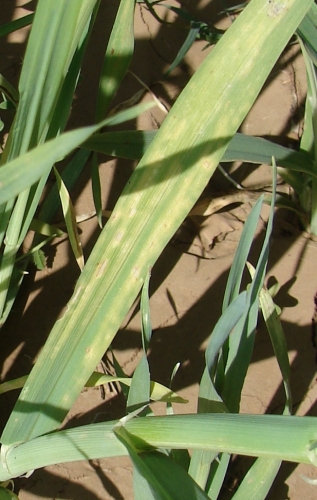 |
| Zn deficient bean plants with characteristic shortened internodes |
 |
Soil acidification can cause aluminum and manganese toxicity. See the Soil Acidification page for more information on the topic.
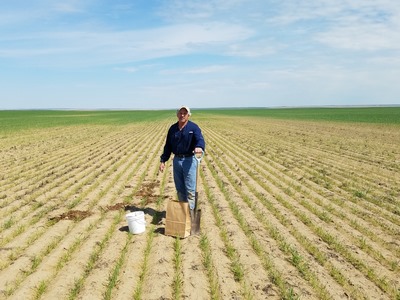
Wheat field with low pH soil. Image provided by R. Engel.
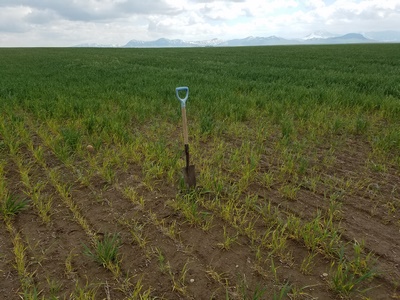
Wheat on low pH soil. Poor growth likely due to Al toxicity. Image by R. Engel.
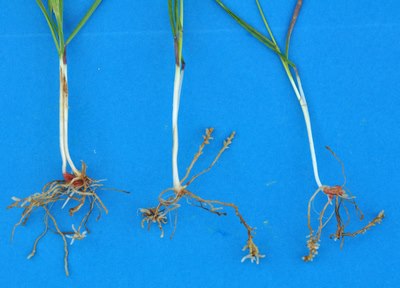
Durum wheat roots stunted by Al toxicity. Image by R. Engel

Safflower field with low soil pH. Images by R. Engel
Safflower roots with Al toxicity (left) and healthy (right)

